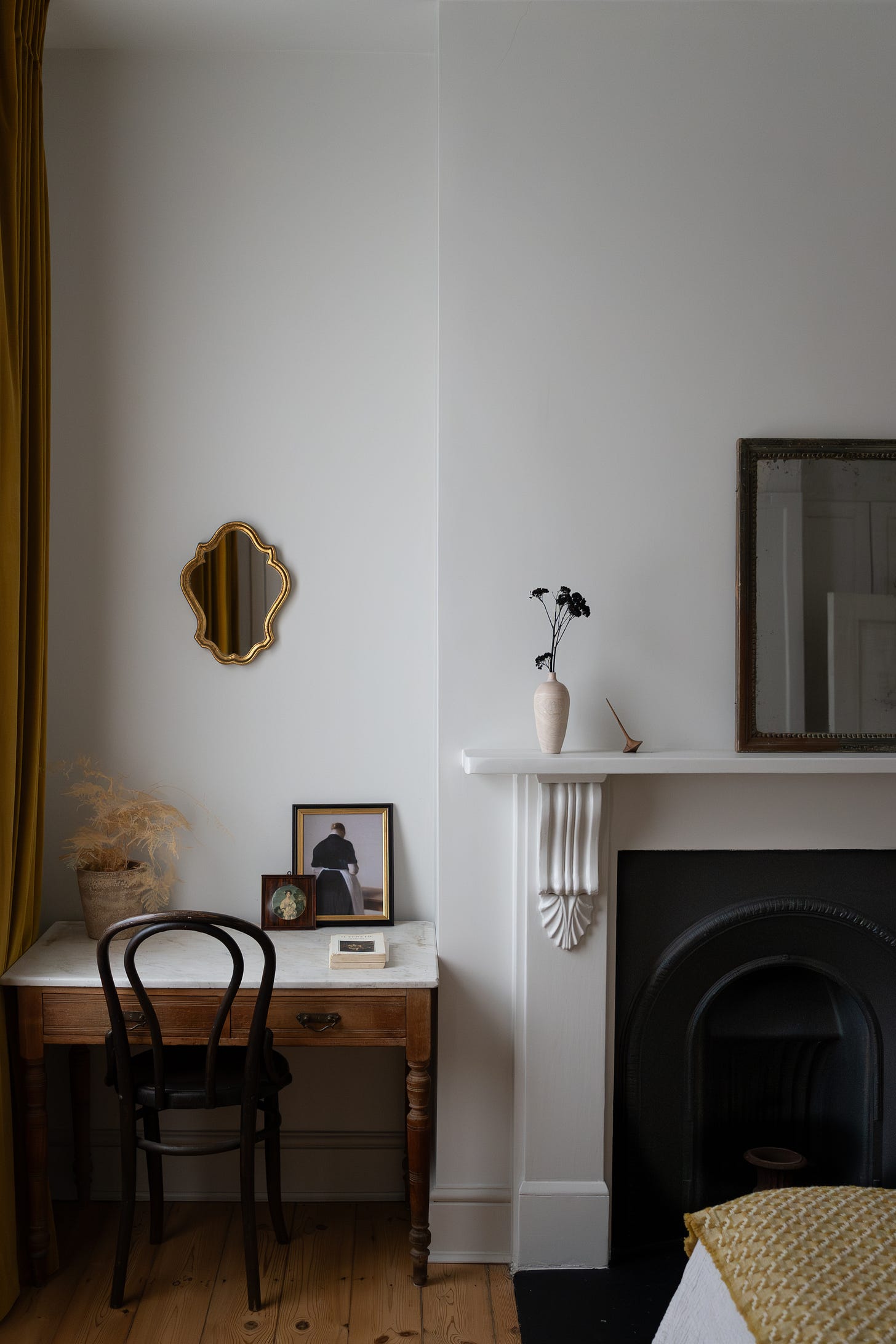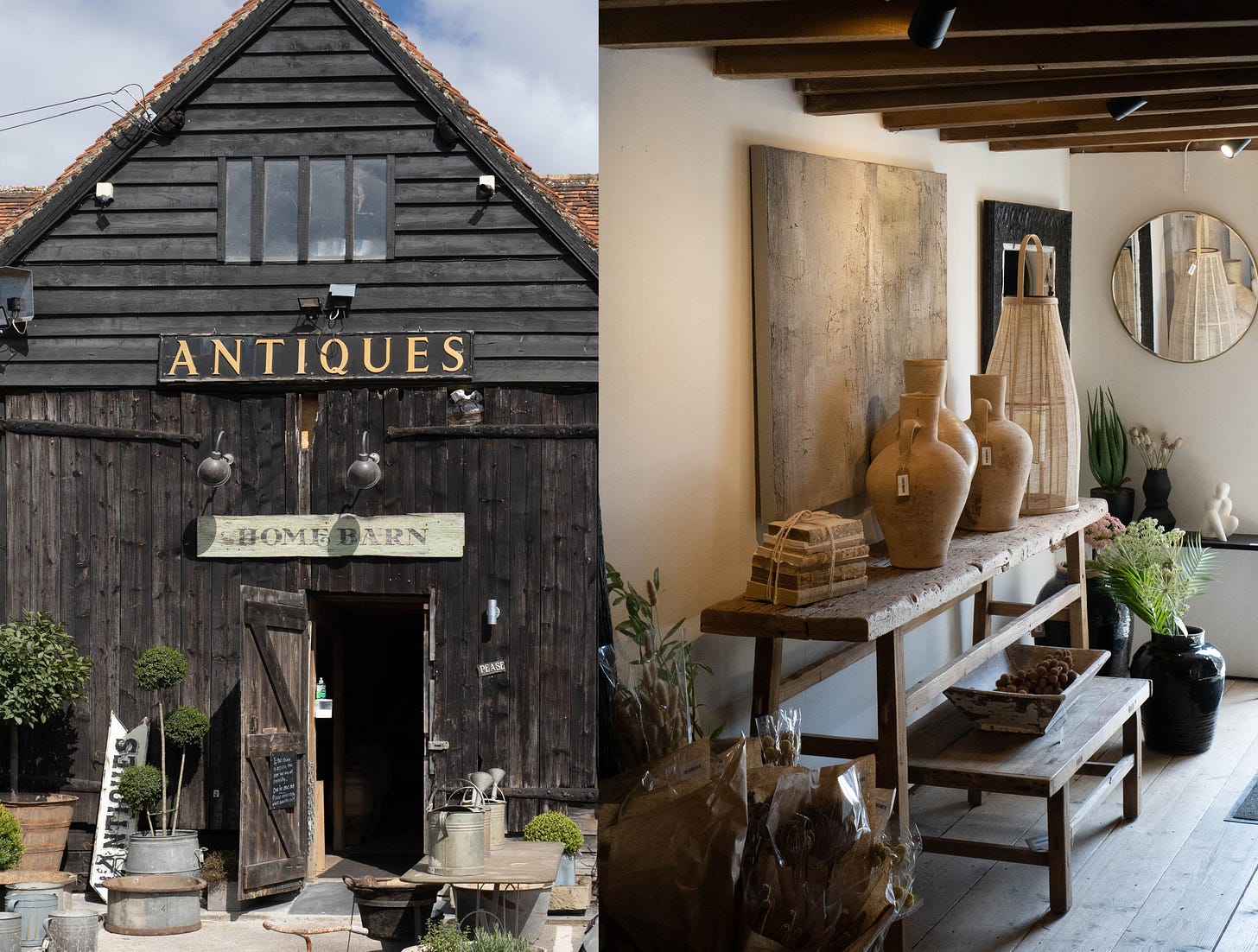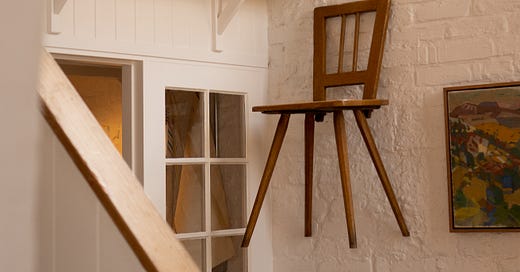Shopping for Antiques
Why I love mixing old and new, some haggling tips, plus exclusively for my Subscribers: my black book of favourite Antique destinations around the South of England (and online).
If you know me, you know that I have a thing for old things. Perhaps it is because in Italy, where I am from, everything is old, so I have a natural inclination towards things that are well lived in (our home dates back to the 1860s!). So here is my love letter to Antiques, and everything I have so far learned about it.
Why Antiques?
It would be too easy to start by saying that buying pre-loved things is the sustainable thing to do. But although I am conscious of trying to do my bit to help the planet, I am in no position to preach anything to anyone, so I’ll leave it at that.
What I will say, instead, is that incorporating vintage and antique pieces is a sure way to instantly add character and warmth to any space. Don’t be afraid of mixing different eras: I love juxtaposing contemporary furniture with old pieces to create an effortlessly warm environment that feels lived in and not too precious. In fact, I tend to think that sticking to just one era with interiors can feel a little one-dimensional or even pastiche – unless of course you are living in a Mies Van De Rohe house and you are a purist, in which case by all means feel free to stick to mid-century furniture!
But there is another reason why I love old things so much, and that’s because, unlike most fresh, store-bought items – they have a story to tell. I am intrigued by the thought that this object that I love so much, and that now lives in my home, once upon a time used to belong to someone else. What was that home like, what happy or sad memories have they been a part of? Whose eyes have set on this object once before, deciding it had to be theirs?
For similar reasons, I find ancestry deeply fascinating. I don’t know anything about my family past my great-grandparents, but I dream of one day digging into my family history and finding out about all those people before me, whom I have to thank for my existence. Perhaps, at the heart of it, I am just an hopeless nostalgic.
Antiques vs Vintage
Many people commonly use Antiques and Vintage interchangeably to refer to the same thing. I used to be one of those people, before learning that there is actually a very distinct difference between the two terms.
The demarcating line between the two is 100 years: if a piece is over 100 years old (aka before the 1920s), then it’s Antique; if it’s under 100 years old (but more than 20), then it’s Vintage.
Although I have a mix of both in my home, the title of this Article hints at where my preference goes: to me, the older a piece, the better. The sweet spot for me is around the Victorian era (roughly speaking, the 1800s). Perhaps because my home is Victorian, and I like the idea of returning to it some objects that were created around the same time.

Haggling
Contrary to modern mass-produced products, the value of Antiques is not an exact science. It’s more similar to the Art market, where the value is determined by a number of things, including rarity, demand, and sales track history. In other words, that object is as valuable as someone is willing to pay for it. The good news is, that usually means there is some wiggle room in the price: trying to get the best deal is half the fun when shopping for Antiques.
My good friend Samara, who is a fellow antique lover and expert bargain-finder, taught me everything I know about the art of haggling. I used to feel too awkward and inexperienced to try to negotiate the price down. Now, although I can’t say that I am as dexterous in the matter as she is, I’ll nearly always give it a go and try my luck. The more you do it, the easier it becomes, and the thrill you get once you manage to negotiate the price down is formidable.
The first tip I have for you may seem really basic, but I actually think is the most crucial one: be polite. Like in most things in life, politeness will get you a long way, so it is always a good idea to be friendly to the dealer or shop owner and have a little chat when entering the shop – regardless of whether you actually want to buy something or not. It is good to build connections and create your network of dealers, but also, on the off chance you are actually interested in a piece, it won’t feel so out of the blue to strike up a conversation about the price, and people tend to be more accommodating if they feel that their precious item is going to a nice person.
As a general rule of thumb, I found that the more informal the setting, the easier it is to haggle. In flea markets and car-boot sales, haggling is not only common but expected. The more expensive and formal the antique shop looks, the lower the chances you will be able to strike a deal. Having said that, a 10% discount is usually quite reasonable, and will often be granted. If you really want to push your luck, you could try starting off at a lower price point, and shake hands in the middle after a few back and forths.
If you go for this approach, it’s advisable not to give away how eager you are (a mistake I made several times at the start of my antique-hunting career, when I professed love at first sight in front of the antique owner). Try your best to come across as nonchalant as you can muster, with a “take it or leave it” kind of air (without being annoying or arrogant, remember what I said about politeness!).
Physical vs Online
In my modest opinion, nothing beats the thrill of a real-life antique hunt. Fancy shops are always great places to train your eye and get inspiration (especially if you are starting out on your antique journey), but I personally prefer the humble flea market or car boot sale. True, most of the things you’ll see on display will be a pile of tat (although I do believe beauty always lies in the eye of the beholder, one man’s trash is another man’s treasure, etcetera), but that’s part of the fun. Finding the one gem amidst a pile of garbage is truly exhilarating, and why I love antique hunting so much.
Aside from this fundamental aspect, there is another advantage to shopping for antiques in person, and that is that it’s much easier to negotiate the price. You could argue that places like eBay and Facebook marketplace are also built to haggle: I found some incredible bargains on the latter – namely the above-pictured Victorian Washstand in my guest bedroom, which I got at a whopping £30. But it is much harder to assess the price fairly when you haven’t seen the piece up close.
Having said that, I also really enjoy surfing the web for antiques, on the likes of Vinterior and co. If you have a very specific idea in your head, then it’s a great way to find exactly what you are looking for, but also to get an understanding of the value of things, as it’s pretty easy to research and compare.
Instagram is also another very useful tool when looking for antique dealers: I would recommend turning on your favourite dealers’ notifications, so you are always the first to know when they drop new pieces. Chances are, the good stuff will be gone within hours and won’t even make it to their website!
If you are one of my paying Subscribers, you’ll find a list of my favourite online dealers at the end of this article.

My little black book for Antiques
Thank you for reading this far! I hope you found some good tips in there, and that I have enticed you to try incorporate some pre-loved things into your home (and give haggling a go!).
My paying subscribers will now have access to a list of my favourite online dealers & towns to visit to shop for antiques, all within easy reach from London (not that there aren’t gems up north, I am just not as familiar as I am with the south of the country!).
If that is already you, I’d like to take the chance to say a special thank you for supporting my work, it means the world to me and it allows me to keep writing. With so many talented writers to choose from here on Substack, I appreciate the competition is fierce (I myself would love to support many more than I currently do, if I could afford it), so rest assured I take your support very seriously and I am deeply honoured and grateful!
If you can’t quite commit to upgrading your subscription just yet, I totally understand that too. If you feel like supporting my work still, I would so appreciate it if you could spread the word and share it with people you know, if you think they would enjoy it.
Right, without further ado…
Who’s ready to go Antique shopping?






